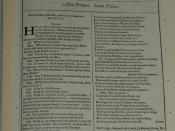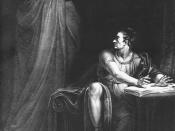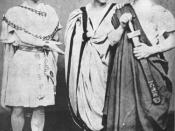The Tragedy of Julius Caesar
In The Tragedy of Julius Caesar written by William Shakespeare, the three examples of foreshadowing are The Tragedy of Julius Caesar, Beware the Ides of March, and the Tempest. The definition of foreshadowing is to present a warning, sign, or hint of beforehand.
The Tragedy of Julius Caesar has many examples of foreshadowing and one of them is the name of the book. The Tragedy of Julius Caesar explains that there is a tragedy or a big incident that pertains to Julius Caesar. As scene 1 starts Cassius talks to Brutus. Brutus is Cassiuses brother and Brutus is very close friends to Julius Caesar. Cassius tries to persuade Brutus to join an alliance to kill Julius Caesar but Brutus says he does not want anything to happen to Caesar and for Cassius to leave him alone. The Tragedy of Julius Caesar mainly states that Julius Caesar will be killed or hurt.
A tragedy means a work in which a series of actions leads to the downfall of the main character or tragic hero. Foreshadowing takes place right when you look at the name of the play.
In act 1 scene 2 another act of foreshadowing takes place when Julius Caesar attends the festival of Lupercal. A soothsayer says to Julius Caesar "Beware the Ides of March" which means to beware of the middle day of March which would be March 15. A soothsayer is a fortune teller. Caesar immediately says "He is a dreamer; let us leave him. Pass. Foreshadowing pertains to this saying because the soothsayer was right and when the Ides of March come Julius Caesar gets killed.
On the night of March 14 a violent thunder and lightning storm takes place. Casca gets worried that the storm and the...


